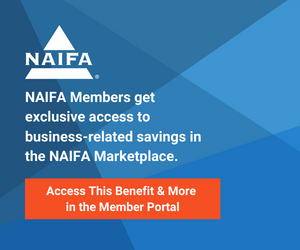Emotion produces the motivation to take action on your sales recommendations.
When I first entered this business, I was told that selling life insurance is an emotional sale. This axiom still applies today, so I ask: What are you going to do to create emotion in your interviews?
I often hear from my coaching clients how they have been trained to create emotion in their interviews. Some of them have learned to create a warm-up talk, essentially a commercial that explains all about themselves, their company and their career. Others suggest the emotion is in telling a good story. The story could be about someone who died without the proper life insurance and how their family suffered, or for those in the multiline industry, the story might involve someone who suffered an auto or home loss without the correct overages. I also often hear about the importance of using visual aids/brochures. I learned “You’ll Create a Fortune” (I'm really dating myself now!)—a visual presentation where I talked and turned plastic-coated pages for about 10 minutes. When I was finished, my prospects looked like they were off in some alternate universe thinking about everything but what I recited. There are other tools, but most all of them fail to do what we intend because most of the talking is from us. Yes, we are communicating but not connecting emotionally with our prospects.
In this article, I will talk about how you can create emotion in your interviews and how powerful it can be in motivating your client to take action on your recommendations.
Let’s start with why the above strategies fail consistently in creating emotion. A very interesting human dynamic is that the more we talk, the more comfortable and connected we feel to our prospect. Although we are communicating in the examples above, we are most certainly not connecting emotionally because the prospect is not engaged. We need to have them talking more than us. You are or were single at one time—remember the first date? Talk about yourself for the first 20 minutes, and I can guarantee there will be no second date!
Creating the Emotional Connection
Here’s what you can do to make that connection. First, we do need a good warm-up. It should, however, be about how you can help THEM specifically. And make it brief! Something like, “I help young families/business owners/pre-retirees prepare for their financial future and eliminate the worry about retirement/taking care of their family.” Do they care if you live in town or have a family? Maybe they do, but it’s not essential to bring that up right now. Talk about your company. There are more than 1,000 companies selling life insurance in the U.S. and most people have heard of about 10 or 15 of them. Your company ratings can be a good item to share when you present a solution. Keep your warm-up to one or two minutes, and be sure to make it about how you help people like THEM solve their financial problems and achieve their dreams.
A story about someone you know who is having difficulty in retirement or a family tragedy does create emotion—IN YOU. Yes, it may be sad to hear, but reading the obituaries about people you don’t know does not have nearly the emotional impact as seeing one about someone you do. Everyone knows someone who’s had a heart attack, stroke, cancer or a disability—get your clients to tell YOU their story about families they know who have suffered through this and then ask, “What would your family do if you were to go through this?” This is a powerful emotional question that they need to answer. Remember, your story, as caring and emotional as it is to you, does not have anywhere near the same impact on your prospect. Get theirs!
Visual Selling
Today's visual aids most always rest on company brochures and, of course, our 20+ pages of product illustrations. Do they create emotion? Yes, often confusion! These have their proper place in the selling cycle—in the solution/closing interview. Presenting these without the emotional connection most always leads to objections like, “I’d like to shop around” or “I want to think about it.” These comments are a sure sign that you have failed to connect emotionally with the client. Save them for the closing interview after you’ve made the emotional connection and heard their story.
Connect Further
And finally, there are two key questions that will always create emotion and also demonstrate your sincere caring for your clients: “How does that make you feel?" and “Why is that important to you?” When clients talk about college education for their children or paying off the mortgage for their family, before you jump into the “How much..?” analytical, ask the above questions and experience a true emotional connection with your client. It's the emotions they express that will be their motivation to act on your recommendations.
Talk less, connect more!
By Ray Vendetti CLU, ChFC
---------
Ray Vendetti CLU, ChFC, has been in the multiline industry for 19 years and regularly coaches groups and individual producers in the financial-services industry. Contact him at ray@rayvendetti.com or at 760-443-1719. Visit his website atwww.rayvendetti.com.





.png?width=300&height=300&name=CC%202025%20Ad%20(300%20x%20300%20px).png)
.png?width=300&height=600&name=Tax%20Talk%20Graphic%20-%20email%20tower%20(300%20x%20600%20px).png)



.png?width=300&name=NAIFA-FSP-LH%20with%20tagline%20-%20AT%20blog%20email%20ad%20(300%20x%20250%20px).png)
.png?width=728&height=89&name=2024%20Congressional%20Conference%20(728%20x%2089%20px).png)
